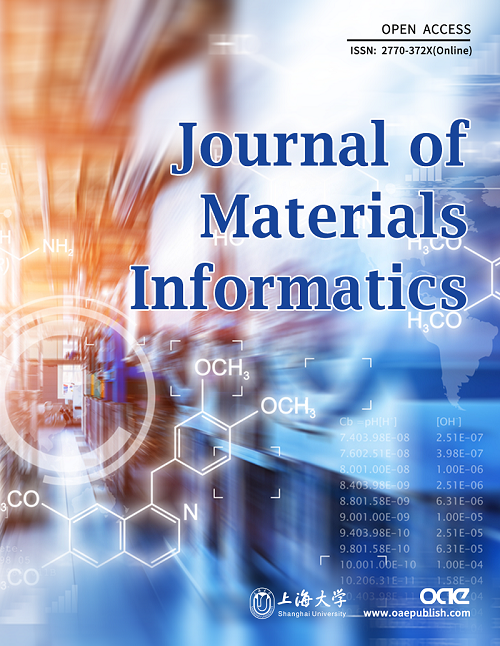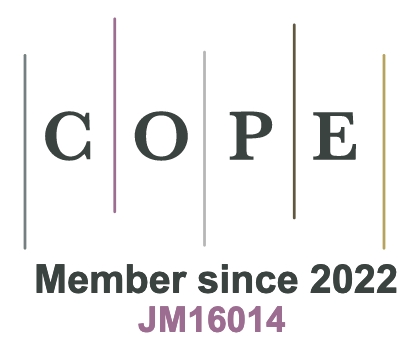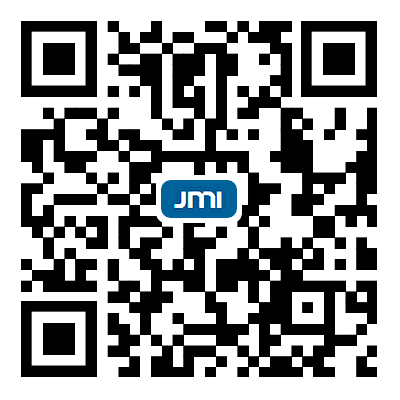REFERENCES
1. Yeh, J.; Chen, S.; Lin, S.; et al. Nanostructured high-entropy alloys with multiple principal elements: novel alloy design concepts and outcomes. Adv. Eng. Mater. 2004, 6, 299-303.
2. Li, Z.; Pradeep, K. G.; Deng, Y.; Raabe, D.; Tasan, C. C. Metastable high-entropy dual-phase alloys overcome the strength-ductility trade-off. Nature 2016, 534, 227-30.
3. Lei, Z.; Liu, X.; Wu, Y.; et al. Enhanced strength and ductility in a high-entropy alloy via ordered oxygen complexes. Nature 2018, 563, 546-50.
4. Wang, D.; Tan, J.; Li, C.; Qin, X.; Guo, S. Enhanced creep resistance of Ti30Al25Zr25Nb20 high-entropy alloy at room temperature. J. Alloys. Compd. 2021, 885, 161038.
5. Su, Z.; Shi, T.; Yang, J.; et al. The effect of interstitial carbon atoms on defect evolution in high entropy alloys under helium irradiation. Acta. Mater. 2022, 233, 117955.
7. Islam, N.; Huang, W.; Zhuang, H. L. Machine learning for phase selection in multi-principal element alloys. Comput. Mater. Sci. 2018, 150, 230-5.
8. Wen, C.; Zhang, Y.; Wang, C.; et al. Machine learning assisted design of high entropy alloys with desired property. Acta. Mater. 2019, 170, 109-17.
9. Xiong, J.; Shi, S.; Zhang, T. Machine learning of phases and mechanical properties in complex concentrated alloys. J. Mater. Sci. Technol. 2021, 87, 133-42.
10. Wen, C.; Wang, C.; Zhang, Y.; et al. Modeling solid solution strengthening in high entropy alloys using machine learning. Acta. Mater. 2021, 212, 116917.
11. Vazquez, G.; Singh, P.; Sauceda, D.; et al. Efficient machine-learning model for fast assessment of elastic properties of high-entropy alloys. Acta. Mater. 2022, 232, 117924.
12. Li, X.; Zheng, M.; Li, C.; Pan, H.; Ding, W.; Yu, J. Accelerated design of low-activation high entropy alloys with desired phase and property by machine learning. Appl. Mater. Today. 2024, 36, 102000.
13. Miracle, D.; Senkov, O. A critical review of high entropy alloys and related concepts. Acta. Mater. 2017, 122, 448-511.
14. Gorsse, S.; Nguyen, M. H.; Senkov, O. N.; Miracle, D. B. Database on the mechanical properties of high entropy alloys and complex concentrated alloys. Data. Brief. 2018, 21, 2664-78.
15. Xue, D.; Xue, D.; Yuan, R.; et al. An informatics approach to transformation temperatures of NiTi-based shape memory alloys. Acta. Mater. 2017, 125, 532-41.
16. Jones, R.; Heinisch, H.; Mccarthy, K. Low activation materials. J. Nucl. Mater. 1999, 271-272, 518-25.
17. Xian, X.; Zhong, Z.; Zhang, B.; et al. A high-entropy V35Ti35Fe15Cr10Zr5 alloy with excellent high-temperature strength. Mater. Design. 2017, 121, 229-36.
18. Barron, P.; Carruthers, A.; Fellowes, J.; Jones, N.; Dawson, H.; Pickering, E. Towards V-based high-entropy alloys for nuclear fusion applications. Scr. Mater. 2020, 176, 12-6.
19. Kareer, A.; Waite, J.; Li, B.; Couet, A.; Armstrong, D.; Wilkinson, A. Short communication: ‘Low activation, refractory, high entropy alloys for nuclear applications’. J. Nucl. Mater. 2019, 526, 151744.
20. Wang, Y.; Yao, Q.; Kwok, J. T.; Ni, L. M. Generalizing from a few examples: a survey on few-shot learning. ACM. Comput. Surv. 2021, 53, 1-34.
21. Zhang, Y.; Ling, C. A strategy to apply machine learning to small datasets in materials science. npj. Comput. Mater. 2018, 4, 81.
22. Pan, S. J.; Yang, Q. A survey on transfer learning. IEEE. Trans. Knowl. Data. Eng. 2010, 22, 1345-59.
23. Zhuang, F.; Qi, Z.; Duan, K.; et al. A comprehensive survey on transfer learning. Proc. IEEE. 2021, 109, 43-76.
24. Kim, Y.; Kim, Y.; Yang, C.; Park, K.; Gu, G. X.; Ryu, S. Deep learning framework for material design space exploration using active transfer learning and data augmentation. npj. Comput. Mater. 2021, 7, 609.
25. Wang, X.; Tran, N.; Zeng, S.; Hou, C.; Chen, Y.; Ni, J. Element-wise representations with ECNet for material property prediction and applications in high-entropy alloys. npj. Comput. Mater. 2022, 8, 945.
26. Wei, X.; Wang, C.; Jia, Z.; Xu, W. High-cycle fatigue S-N curve prediction of steels based on a transfer learning-guided convolutional neural network. J. Mater. Inf. 2022, 2, 9.
27. Quiñonero-Candela, J.; Sugiyama, M.; Schwaighofer, A.; Lawrence, N. D. Dataset shift in machine learning. MIT Press, 2009.
28. Li, K.; Decost, B.; Choudhary, K.; Greenwood, M.; Hattrick-Simpers, J. A critical examination of robustness and generalizability of machine learning prediction of materials properties. npj. Comput. Mater. 2023, 9, 1012.
29. Wang, J.; Lan, C.; Liu, C.; et al. Generalizing to unseen domains: a survey on domain generalization. IEEE. Trans. Knowl. Data. Eng. 2023, 35, 8052-72.
30. Motiian, S.; Jones, Q.; Iranmanesh, S. M.; Doretto, G. Few-shot adversarial domain adaptation. In Proceedings of the 31st International Conference on Neural Information Processing Systems, Long Beach, USA; Curran Associates Inc., 2017; pp 6673-83.
31. Long, M.; Wang, J.; Ding, G.; Pan, S. J.; Yu, P. S. Adaptation regularization: a general framework for transfer learning. IEEE. Trans. Knowl. Data. Eng. 2014, 26, 1076-89.
32. Stojanov, P.; Li, Z.; Gong, M.; Cai, R.; Carbonell, J. G.; Zhang, K. Domain adaptation with invariant representation learning: what transformations to learn? In Proceedings of the 35th International Conference on Neural Information Processing Systems; Curran Associates Inc., 2021.
33. Goetz, A.; Durmaz, A. R.; Müller, M.; et al. Addressing materials’ microstructure diversity using transfer learning. npj. Comput. Mater. 2022, 8, 703.
34. Hu, J.; Liu, D.; Fu, N.; Dong, R. Realistic material property prediction using domain adaptation based machine learning. Digit. Discov. 2024, 3, 300-12.
35. Zhao, H.; Combes, R. T. D.; Zhang, K.; Gordon, G. On learning invariant representations for domain adaptation. arXiv2019, arXiv:1901.09453. Available online: https://doi.org/10.48550/arXiv.1901.09453. (accessed 6 Feb 2025)
36. Huo, H.; Rupp, M. Unified representation of molecules and crystals for machine learning. Mach. Learn. Sci. Technol. 2022, 3, 045017.
37. Pan, S. J.; Tsang, I. W.; Kwok, J. T.; Yang, Q. Domain adaptation via transfer component analysis. IEEE. Trans. Neural. Netw. 2011, 22, 199-210.
38. Fernando, B.; Habrard, A.; Sebban, M.; Tuytelaars, T. Unsupervised visual domain adaptation using subspace alignment. In 2013 IEEE International Conference on Computer Vision, Sydney, Australia, December 01-08, 2013; IEEE, 2013; pp 2960-7.
39. Peng, H.; Long, F.; Ding, C. Feature selection based on mutual information: criteria of max-dependency, max-relevance, and min-redundancy. IEEE. Trans. Pattern. Anal. Mach. Intell. 2005, 27, 1226-38.
40. Koza, J. Genetic programming as a means for programming computers by natural selection. Stat. Comput. 1994, 4, BF00175355.
41. Chen, Y.; Hu, X.; Zhao, J.; Wang, Z.; Li, J.; Wang, J. Symbolic regression and two-point statistics assisted structure-property linkage based on irregular-representative volume element. Adv. Theory. Simul. 2023, 6, 2200524.
42. Xiong, J.; Shi, S.; Zhang, T. A machine-learning approach to predicting and understanding the properties of amorphous metallic alloys. Mater. Design. 2020, 187, 108378.
43. Huang, X.; Zheng, L.; Xu, H.; Fu, H. Predicting and understanding the ductility of BCC high entropy alloys via knowledge-integrated machine learning. Mater. Design. 2024, 239, 112797.
44. Lee, J. A.; Figueiredo, R. B.; Park, H.; Kim, J. H.; Kim, H. S. Unveiling yield strength of metallic materials using physics-enhanced machine learning under diverse experimental conditions. Acta. Mater. 2024, 275, 120046.
45. Feng, S.; Sun, X.; Chen, G.; Wu, H.; Chen, X. LBE corrosion fatigue life prediction of T91 steel and 316 SS using machine learning method assisted by symbol regression. Int. J. Fatigue. 2023, 177, 107962.
46. Couzinié, J. P.; Senkov, O. N.; Miracle, D. B.; Dirras, G. Comprehensive data compilation on the mechanical properties of refractory high-entropy alloys. Data. Brief. 2018, 21, 1622-41.
47. Carruthers, A.; Li, B.; Rigby, M.; et al. Novel reduced-activation TiVCrFe based high entropy alloys. J. Alloys. Compd. 2021, 856, 157399.
48. Ayyagari, A.; Salloom, R.; Muskeri, S.; Mukherjee, S. Low activation high entropy alloys for next generation nuclear applications. Materialia 2018, 4, 99-103.
49. Liu, Y.; Yao, Z.; Zhang, P.; et al. Enhanced strength without sacrificing ductility in FeCrMnVSix high entropy alloys via controlling the ratio of metallic to covalent bonding. Mater. Design. 2023, 225, 111565.
50. Carruthers, A.; Shahmir, H.; Hardwick, L.; Goodall, R.; Gandy, A.; Pickering, E. An assessment of the high-entropy alloy system VCrMnFeAlx. J. Alloys. Compd. 2021, 888, 161525.
52. Guo, S.; Liu, C. Phase stability in high entropy alloys: formation of solid-solution phase or amorphous phase. Prog. Nat. Sci. Mater. Int. 2011, 21, 433-46.
53. Wang, W. Y.; Shang, S. L.; Wang, Y.; et al. Atomic and electronic basis for the serrations of refractory high-entropy alloys. npj. Comput. Mater. 2017, 3, 24.
54. Weng, B.; Song, Z.; Zhu, R.; et al. Simple descriptor derived from symbolic regression accelerating the discovery of new perovskite catalysts. Nat. Commun. 2020, 11, 3513.
55. Lavalle, S. M.; Branicky, M. S.; Lindemann, S. R. On the relationship between classical grid search and probabilistic roadmaps. Int. J. Robot. Res. 2004, 23, 673-92.
56. Lundberg, S. M.; Lee, S. I. A unified approach to interpreting model predictions. In Proceedings of the 31st International Conference on Neural Information Processing Systems, Long Beach, USA; Curran Associates Inc., 2017; pp 4766-75.
57. Pedregosa, F.; Varoquaux, G.; Gramfort, A.; et al. Scikit-learn: machine learning in Python. arXiv2012, arXiv:1201.0490. Available online: https://doi.org/10.48550/arXiv.1201.0490. (accessed 6 Feb 2025)
58. Harris, C. R.; Millman, K. J.; van, W. S. J.; et al. Array programming with NumPy. Nature 2020, 585, 357-62.
59. Virtanen, P.; Gommers, R.; Oliphant, T. E.; et al; SciPy 1.0 Contributors. SciPy 1.0: fundamental algorithms for scientific computing in Python. Nat. Methods.2020, 17, 261-72.
61. Borgwardt, K. M.; Gretton, A.; Rasch, M. J.; Kriegel, H. P.; Schölkopf, B.; Smola, A. J. Integrating structured biological data by kernel maximum mean discrepancy. Bioinformatics 2006, 22, e49-57.
62. Du, Y. Y.; Lu, Y. P.; Li, T. J.; Wang, T. M.; Zhang, G. L. Effect of aluminium content of AlxCrFe1.5Ni0.5 multiprincipal alloys on microstructure and alloy hardness. Mater. Res. Innov. 2011, 15, 107-10.
63. Wang, W.; Wang, W.; Wang, S.; Tsai, Y.; Lai, C.; Yeh, J. Effects of Al addition on the microstructure and mechanical property of AlxCoCrFeNi high-entropy alloys. Intermetallics 2012, 26, 44-51.








